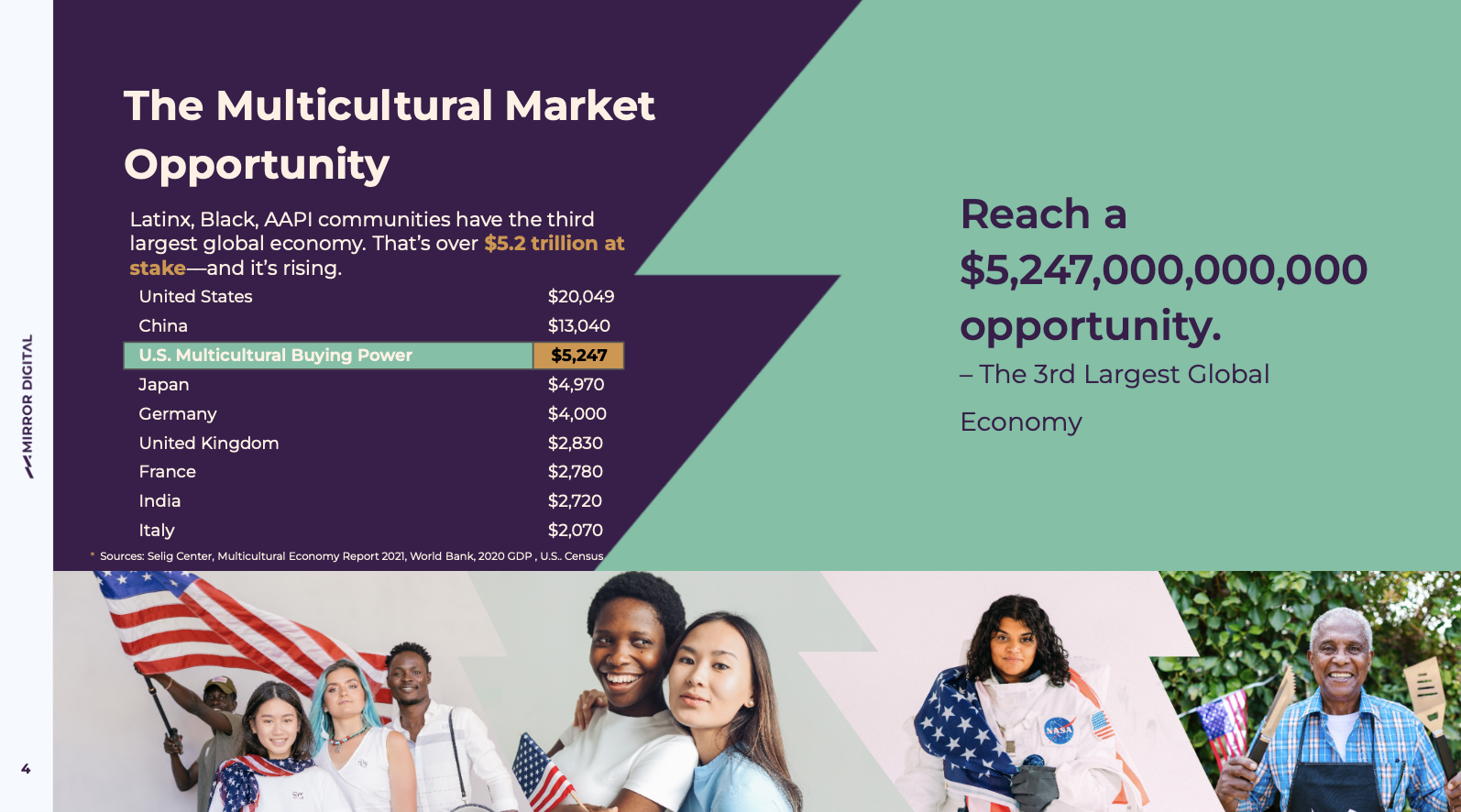
Let’s work to actively implement positive changes inclusive to all.
At a time when DEI&B is seemingly under attack, its significance is still of great value to businesses. Sheila Marmon, CEO and Founder of Mirror Digital hit the nail in the coffin when she said, “Diversity is not just an initiative; but rather a reality of our pluralistic society,” if you were thinking of cutting DEI&B out of your business conversations, don’t!
According to Kantar’s “Brand Inclusion Index,” there are still huge financial advantages to putting DEI&B at the forefront. Black, Latinx, and AAPI consumers have the third largest economy, with over $5.2 trillion at stake. Who is silly enough to miss out on that? At the end of the day, the dinero is still green.
During an afternoon mainstage session at PubForum Coronado Island, Lisa Mae Brunson, founder of Wonder Women Tech, Alex Haluska, Sr. Director of Revenue Operations at MyCode, and Sheila Marmon (mentioned above) discussed the strategies that they take in their roles to make sure that everyone on their team has a seat at the table, and that their business is inclusive and relatable for all consumers.
DEI&B is no longer just an ethical consideration. In a world where societal norms and demographics are continually shifting, businesses must embrace these principles. Recent debates surrounding DEI&B only underscores the urgency of staying tapped in.
Navigating the Turbulence: The Need for Resilient DEI&B Strategies
Headlines detailing setbacks in the advancement of DEI&B have raised concerns about the authenticity and durability of these initiatives. However, these challenges highlight the significance of reinforcing resilient strategies that ensure DEI&B remains a core priority.
“It’s about how we are being inclusive as a whole. Companies really should think about that in their strategy, their data collection, from A to Z,” explained Lisa Mae Brunson. “Create inclusive practices not just from hiring, but also from how we create a culture of retention. How are we making sure that we’re being respectful of humans with different backgrounds? Those are some of the easiest ways to create inclusive environments.”
Addressing the issue of weaponizing DEI&B is a crucial starting point, and it involves adopting measures to counteract the negative narratives and divisive forces that seek to undermine the principles of diversity and inclusivity.
Inclusive Hiring and Representation
The commitment to inclusive hiring practices and representation is at the heart of any effective DEI&B initiative. It is important to create diverse teams that reflect a broad spectrum of backgrounds, perspectives, and experiences. This requires going beyond traditional definitions of diversity and encompassing a wide range of identities, including race, ethnicity, gender, sexual orientation, ability, age, and more.
To drive this effort, implement the following:
- Rethink sourcing strategies to tap into a diverse pool of candidates.
- Establish clear diversity goals and hold leadership accountable for meeting them.
- Provide unconscious bias training for hiring managers and interviewers.
- Partner with diverse organizations and educational institutions to widen the talent pipeline.
Create a Culture of Inclusion and Belonging
It’s a must that company culture is more than inclusive, as DEI&B cannot exist in isolation. A truly inclusive culture encourages every employee to bring their authentic selves to work, promotes open dialogue, and values the contributions of all team members.
“The biggest thing here is making sure that everyone in the room feels like their voice is important,” explained Alex Haluska. “I don’t know what I don’t know, and someone with a better perspective than me about a subject matter should be treated as such. Having a diverse group in the room will lead to better results.”
Businesses can create this type of environment by:
- Establishing Employee Resource Groups (ERGs) that provide a platform for marginalized groups to connect and influence company policies.
- Implementing diversity-focused training programs for all employees, fostering understanding and empathy.
- Encouraging open conversations about identity, biases, and experiences to break down barriers.
- Recognizing and celebrating diverse cultural events and holidays.
The Harmful Exclusivity of AI in DEI&B
When it comes to AI in DEI&B, of course, it’s a mess right now. AI is informed by the data collected, and the undiversified data leads to biased and incomplete outcomes. Even facial recognition struggles to recognize darker individuals due to insufficient representation in the training data.
“We call it artificial intelligence, but it’s really collective intelligence,” explained Marmon. “It is the information we have all put into the universe and shared. If you have people building AI tools and experiences that are just totally outside their purview, they don’t even know what they’re missing. So those are things that we have to account for.”
We must fix the data input issue at its core so that all audiences are represented authentically and properly.
Where Do We Go From Here?
There is this common misconception that DEI&B is driven solely by activism and advocacy, but the truth is that it is a strategic business move that not only aligns with ethical considerations but also makes good economic sense.
The rise of the multicultural majority and their significant purchasing power emphasizes that embracing DEI&B is a win-win situation, leading to increased innovation, consumer engagement, and profitability.
In a world where diversity is an asset and inclusivity is a success driver, businesses prioritizing DEI&B are poised to create lasting impact. By implementing the strategies outlined by the panelists, businesses can foster an environment where all individuals are empowered to contribute their unique perspectives, leading to a more inclusive, innovative, and prosperous future.
